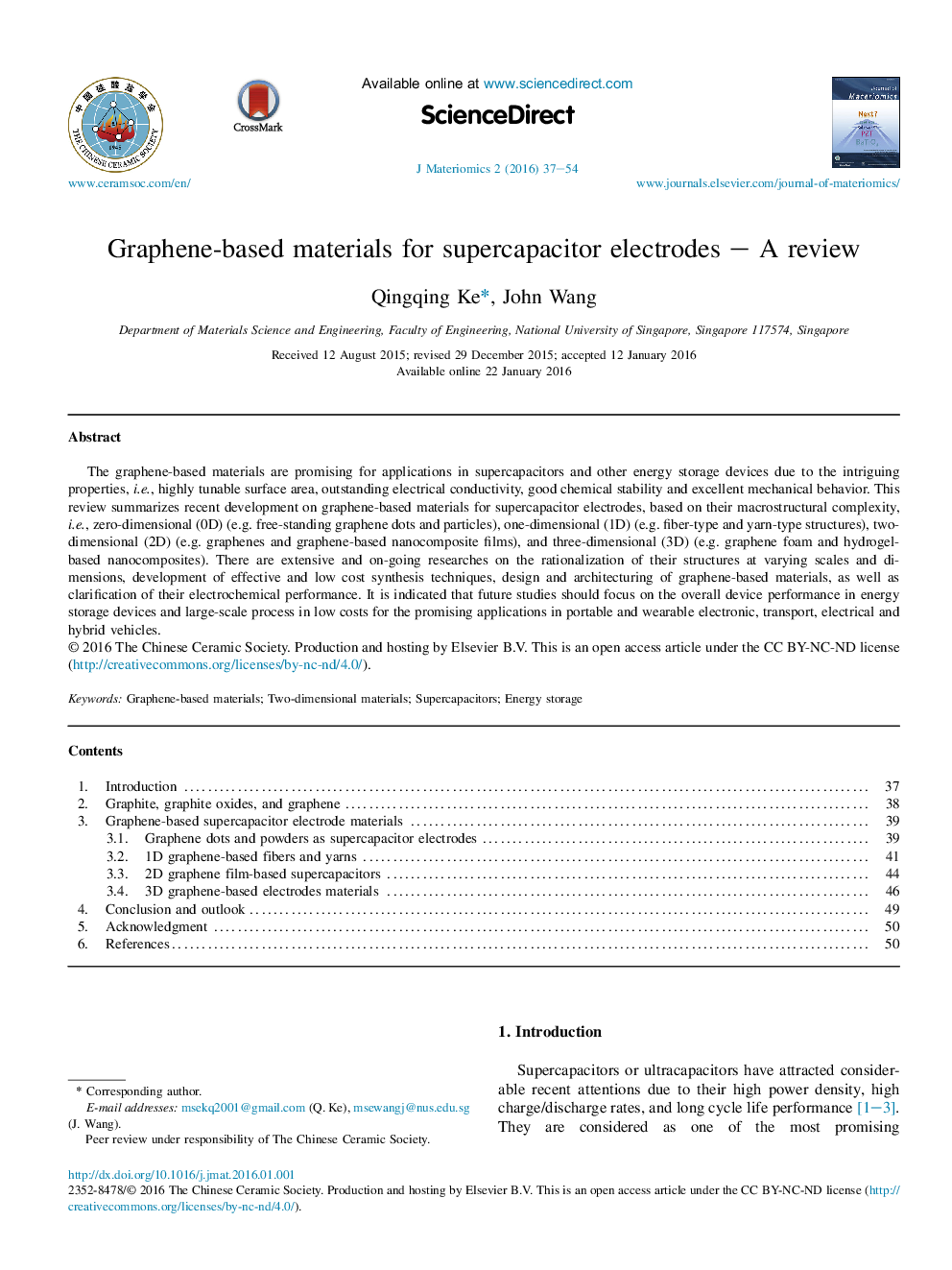| Article ID | Journal | Published Year | Pages | File Type |
|---|---|---|---|---|
| 1515116 | Journal of Materiomics | 2016 | 18 Pages |
The graphene-based materials are promising for applications in supercapacitors and other energy storage devices due to the intriguing properties, i.e., highly tunable surface area, outstanding electrical conductivity, good chemical stability and excellent mechanical behavior. This review summarizes recent development on graphene-based materials for supercapacitor electrodes, based on their macrostructural complexity, i.e., zero-dimensional (0D) (e.g. free-standing graphene dots and particles), one-dimensional (1D) (e.g. fiber-type and yarn-type structures), two-dimensional (2D) (e.g. graphenes and graphene-based nanocomposite films), and three-dimensional (3D) (e.g. graphene foam and hydrogel-based nanocomposites). There are extensive and on-going researches on the rationalization of their structures at varying scales and dimensions, development of effective and low cost synthesis techniques, design and architecturing of graphene-based materials, as well as clarification of their electrochemical performance. It is indicated that future studies should focus on the overall device performance in energy storage devices and large-scale process in low costs for the promising applications in portable and wearable electronic, transport, electrical and hybrid vehicles.
Graphical abstractWe review the recent research progress in graphene-based materials supercapacitors. The graphene-based materials in different macrostructural complexity (e.g. 0D 1D, 2D. 3D) are discussed. The trends towards rationalizing the nanostructure and architecture of graphene-based materials to achieve a better electrochemical performance are also proposed.Figure optionsDownload full-size imageDownload as PowerPoint slide
